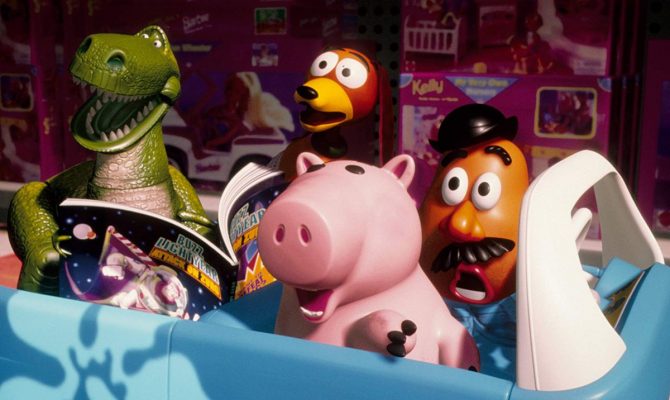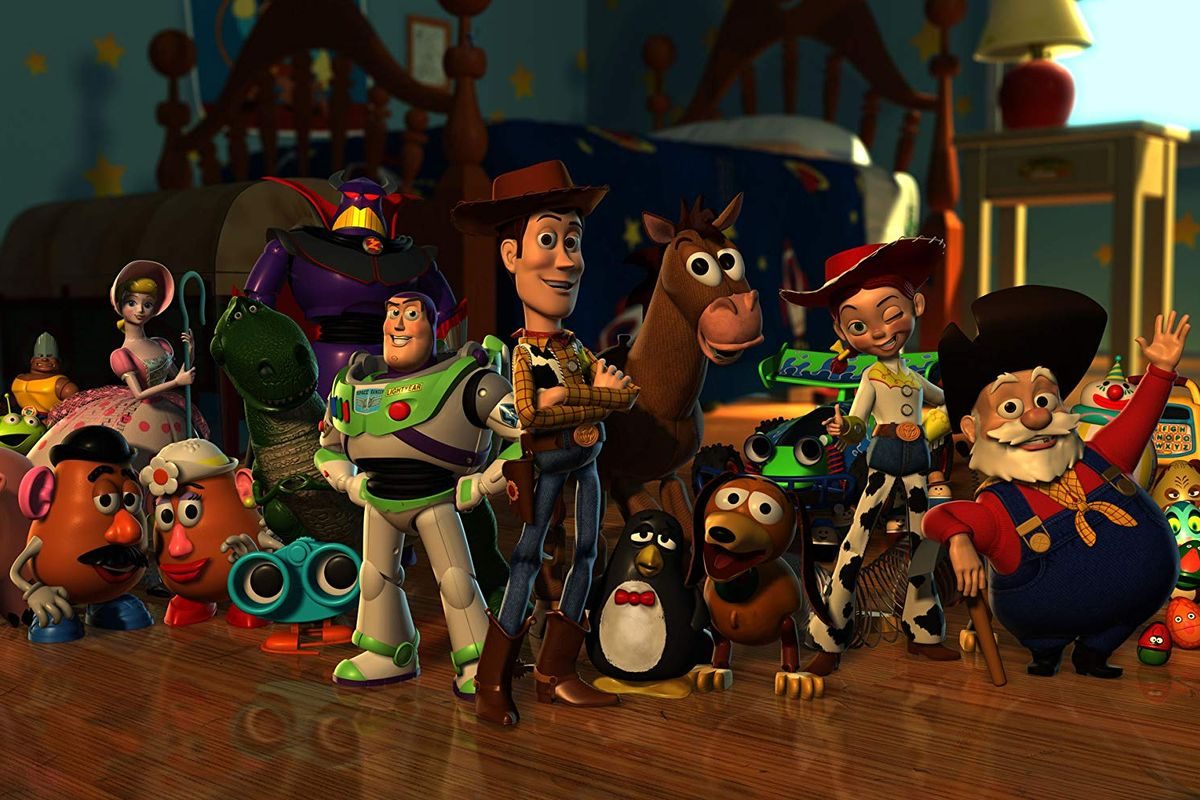Movies, News trend
Toy Story 2 is the best Toy Story
Toy Story 2 is the best Toy Story
It’s also one of the best movies ever made.
With Toy Story 4, Pixar has the unenviable task of following up what was already a perfect trio of films, charting themes of birth, life, and death with lovely grace, despite the fact that their main characters are just a bunch of toys.
That it is able to find yet another new spin on the secret lives of toys is a testament to the studio’s continued strength of imagination. That it finds a new angle on the themes of mortality that 2010’s Toy Story 3 already handled, but one that is bittersweet and wistful to the sheer bombast of Toy Story 3, is even more impressive.
I greatly love both Toy Story 3 and Toy Story 4. But in recent years, I’ve begun to bristle a bit when Toy Story fans say the third is the greatest of the movies. This is, of course, inevitable in a franchise where every movie is superbly designed, lovingly written, and wonderfully performed. There will be partisans of all four films until the end of time.
But I am here to tell you that people who don’t think 1999’s Toy Story 2 is the greatest Toy Story film or that the two films that follow it will forever live in its shadow are wrong. Toy Story 2 isn’t just the best Toy Story movie. It’s a genuine American movie classic.
Toy Story 2 delves into themes both the Toy Story franchise and Pixar itself would dissect over the next decade

The first Toy Story was released in 1995 and became the biggest hit movie of that year. It was the first animated feature entirely created with a computer, and even though it looks primitive by modern standards, Pixar’s choice to depict characters made out of plastic means that its artificiality has held up in a way that other computer-animated films from the ’90s just haven’t.
What’s more, Toy Story — which didn’t feature big musical numbers and focused on a buddy comedy between a cowboy and a space ranger, rather than an adolescent coming of age story — felt remarkably different from the other animated movies of the ’90s, its technology aside. It changed the industry so much that American studios almost never produce hand-drawn animated films anymore (a travesty, but not really Pixar’s fault), and it was recognized for its achievements with not just a massive box office intake, but a handful of Oscar nominations too (as well as a special-achievement award for being the first “feature-length computer-animated film”).
Naturally, Disney, who distributed the film, wanted a sequel. But Pixar was reticent. Consequently, Toy Story 2 was originally designed as a direct-to-video sequel to that film, before early work on the movie (initially by a very small team within Pixar) suggested it would play well in theaters.
In late 1998, however, folks within Pixar (including Toy Story 2 co-director John Lasseter, who was booted from Pixar in 2018 after accusations of rampant sexual harassment) got a look at the then-current state of Toy Story 2 and feared it would compromise whatever love the American public had for Woody, Buzz Lightyear, and the rest of the toys. Their bet was that they could make a movie that would live up to the legacy of the original and still hit the movie’s projected November 24, 1999, release date — leaving them a little more than nine months to lock the film.
That resulted in a production schedule that was decidedly worker-unfriendly (since the movie was in production basically around the clock for those nine months). And an awareness of that level of “crunch,” as well as Lasseter’s involvement, can make Toy Story 2 harder to revisit.
Yet there’s a wild creativity to Toy Story 2 that arises from Pixar’s desperate need to prove itself. Its 1998 release, A Bug’s Life, was warmly received, but nowhere near the level of Toy Story’s universal acclaim; some critics compared it unfavorably to the competing computer-animated release Antz, which came out a couple of months earlier from Dreamworks and has aged atrociously. (It’s one ugly movie.) Still, at the time, Antz’s celebrity voice cast — including Woody Allen, Sylvester Stallone, and Sharon Stone — and its “what if a Woody Allen movie was about a bug?” premise made it seem like the more “adult” choice.
Thus, Pixar went into Toy Story 2 with a chip on its shoulder. That shines through, but the sheer “we have to fix this now” desperation that resulted from the one-year-to-fix-this-movie timeline created a film that enriches and deepens the ideas introduced in the first Toy Story.
Where Buzz had the identity crisis that drives the first film (in which he has to accept that he is a toy), now it’s Woody who discovers that he is actually a 1950s holdover, a quite valuable TV show tie-in toy who can fetch a pretty penny on the collector’s market. But to become his best, most famous self, he would have to ditch Andy, the kid who owns him and all of his toy friends, by moving to live in a museum in Japan. He will get the immortality of being perfectly preserved on a shelf. But he won’t have Andy or his friends.
The Toy Story movies very loosely form a series about raising children and coming to realize that as your children get older, you get older too, and a little closer to death with every passing year. On this thematic level, then, Toy Story is about Buzz, like a new dad, learning that his needs often have to come second to those of his child.
This basic idea becomes even more potent in Toy Story 2, where Woody literally has to accept that his destiny is vaguely utilitarian, that he exists to fill a void in Andy’s life, and eventually, Andy will be done with him. But he can make Andy’s life better in that time, and that will have to be enough.
What’s beautiful about Toy Story 2 is how these themes develop mostly by implication. Toy Story 3 takes place in a world where Andy has grown up, and it gains substantial emotional power from that. But its choice is, effectively, whether or not to accept that time moves forward, and that your friends and loved ones will get older and die. Which is to say, it’s not actually a choice, because time will move forward whether you want it to or not.
But Toy Story 2 takes place at a time in Andy’s life when Woody really could choose himself and leave the kid behind. It might be more personally fulfilling, even, to embrace his cult icon status and live out his life in the hermetically sealed environment of a museum. We even get to see what will happen to Woody if he chooses to remain with Andy instead of that museum in a poignant flashback to the way Jessie, a cowgirl doll, remembers the girl who loved her, then tossed her aside as she grew older. It comes complete with a heartbreaking Sarah McLachlan performance, and is perhaps the saddest moment in the entire Pixar canon. And that’s saying something.
So, yes, if Woody wants personal fulfillment, he should probably choose the museum. But there would be no risk in it. Raising and loving a child is, on some level, a choice, each and every day, to accept the end of the self in favor of another person who needs your love, protection, and help.
But Toy Story 2 is also a rollicking adventure tale with tremendous storytelling economy

If all Toy Story 2 had were weighty themes, however, it would be a bit of a bummer. What sets the film apart from the other Toy Story movies is how beautifully those themes are integrated into an incredibly fun adventure story that leaves plenty of room for action sequences and comedic flights of fancy. What’s more, it accomplishes this in just 92 minutes, while also giving every single major character their own story arc.
Much of Pixar’s success as a studio — “this was made by Pixar” has become a selling point in and of itself — can be tied to how good it is at classical Hollywood storytelling construction, screenwriting basics like paying off setups, and creating believable character motivations. These skills are present in Toy Story and A Bug’s Life, but they took full flower in Toy Story 2.
Take something as simple as Rex the dinosaur trying and failing to beat a Buzz Lightyear video game at the start of the film. At first, this feels like a silly one-off gag about how Rex’s tiny arms can’t work the controller as well as he’d like. But then, late in the film, the movie pays this off in the form of a sequence where Rex essentially has to live out the sequence he was stuck on from the video game in the real world. What was a funny joke becomes a thrilling moment of a character facing up to his own weaknesses and overcoming them.
That the movie finds a way to do this with every single character is striking, but even more incredible is that Toy Story 2 also finds ways to play off the character arcs developed in the first film, particularly when it comes to Buzz, who confronts another Buzz Lightyear doll who doesn’t yet realize he’s a toy and is forced to deal with just what an idiot he was back in the first film. It’s terrifically funny, and it allows the film to subtly underline the ideas of personal growth seeded throughout the movie.
Toy Story 2 succeeds because it’s a thematically thoughtful movie, yes, but it’s also a fun movie. That has given it a reputation among some fans that it’s a little slight, and it has the lowest average rating on IMDB of the first three films. (Time will tell how fans rate the fourth.) But the way that Toy Story 2 weds its themes to its more rollicking elements in a way that complements both makes it among Pixar’s crowning achievements. Compare it to, say, Toy Story 3: a real tearjerker, but one where the movie’s adventure story (about escaping a day care center) has next-to-nothing to do with its themes about mortality and aging.
One of Pixar’s greatest strengths when it comes to its storytelling is how often its stories aren’t about individuals overcoming all odds to win the day, but about individuals abnegating their own desires in favor of what’s best for the community. Toy Story 2 makes this the core of every scene, every moment, every joke.
Toy Story 2 is a beautiful, complex film about what it means to choose others instead of yourself every time, and about the weight of making that decision. (Intriguingly, Toy Story 4 explores the flip side of this idea. I won’t spoil it too much, but I think I might come to think of it as just as rich as this film.) But it’s also about how that choice really is a choice, one that different people might make in different ways. That it’s also one of the most action-packed Pixar movies of them all and stuffed with great jokes marks it as a tremendous achievement. It’s not Pixar’s first movie, but it’s the movie when Pixar became Pixar.

